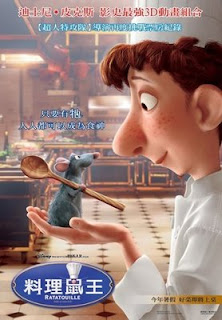 Movies aren't just a collection of scenes. Just as a song needs to gracefully transition from verse to chorus, a traditional Hollywood film needs to gracefully move from scene to scene. Unless it is the filmmakers' intention to create a jarring, disorienting cut from one sequence to the next (perhaps, mirroring a character's confusion within a story, like Leonard's journey in "Memento"), an audience is more likely to enjoy the ride if these transitions feel seamless and emotionally honest.
Movies aren't just a collection of scenes. Just as a song needs to gracefully transition from verse to chorus, a traditional Hollywood film needs to gracefully move from scene to scene. Unless it is the filmmakers' intention to create a jarring, disorienting cut from one sequence to the next (perhaps, mirroring a character's confusion within a story, like Leonard's journey in "Memento"), an audience is more likely to enjoy the ride if these transitions feel seamless and emotionally honest.Usually, the brunt of this job is handled by creative uses of sound mixing and music, which can emotionally tie scenes together into a cohesive experience. A diegetic sound effect from one scene, such as a background fog horn or the sound of the wind, can be subtly and subliminally carried over into the next scene, which could take place in a completely different setting. Also, non-diegetic sound elements, like the orchestral score, can bleed over from one sequence to the next, editorially and emotionally tying together two very different sequences, ensuring that the audience continues their journey with the filmmakers.
One visual way to help bridge the gap from one sequence to another is to extend the logical path of a camera move from the last shot of a sequence into the first shot of the subsequent sequence. Let's look at these two scenes from Brad Bird's "Ratatouille."
Did you see it? It's almost subliminal. Watch it again. The last, craning shot of Colette and Linguini kissing has the camera rotating counter-clockwise, which blends brilliantly with a shot inside Anton Ego's cold, stark office; the first shot of the next scene has just a taste of the exact same camera rotation, but rapidly decelerating to a level horizon (while continuing to travel backwards). We move from one scene (our dopey hero getting a big romantic kiss) to a completely different scene (the cold, dark, bitter office of Anton Ego) with a clever visual continuation of a camera move, not to mention the beautiful transition from one musical theme to another by composer Michael Giacchino.



 The counter-clockwise rotation of the camera that began in the courtyard sequence continues through the cut, settling on the portrait of Ego inside his office, leveling off and settling to a zero angle dutch mere moments after cutting into the scene.
The counter-clockwise rotation of the camera that began in the courtyard sequence continues through the cut, settling on the portrait of Ego inside his office, leveling off and settling to a zero angle dutch mere moments after cutting into the scene.This kind of physical choreography would have required a staggering amount of preplanning and careful execution, had "Ratatouille" been conceived as a live-action film. Not only would each camera move have required extensive previsualization (answering questions like, Can we fit a crane into that location? Do we have enough room to swing the camera that far in the interior location? How will we be able to match the rate of rotation on each end of the cut? etc.), but it also backs the live-action filmmaker into an editorial corner. This type of transition, which would require significant resources to pull off, locks the editor into this narrative decision: these two scenes 100% positively, absolutely need to live side by side, or else the production would have wasted valuable resources creating the shots to achieve this effect. And, when editing a film, especially a blockbuster-type Hollywood movie with lots of locations and lots of characters, one needs to have the editorial freedom to move entire sequences around.
 But in the animated world, the continuation of a camera move from the last shot of a scene into the first shot of the next scene, is a relatively trivial matter. Even after the major editorial decisions have been made, and animation finalled, it is the simple, imminently doable task of creating new camera moves by the layout department to blend these two very disparate scenes together.
But in the animated world, the continuation of a camera move from the last shot of a scene into the first shot of the next scene, is a relatively trivial matter. Even after the major editorial decisions have been made, and animation finalled, it is the simple, imminently doable task of creating new camera moves by the layout department to blend these two very disparate scenes together.This example illustrates some of the fundamental shot design and editorial differences between live-action and animation. With the exception of expensive reshoots, the live-action filmmaker is required to pre-plan his long-term editorial choices, should his or her choices be anything more sophisticated than a cut, while the animation director retains a certain amount of freedom to make these kinds of decisions well into post-production.











